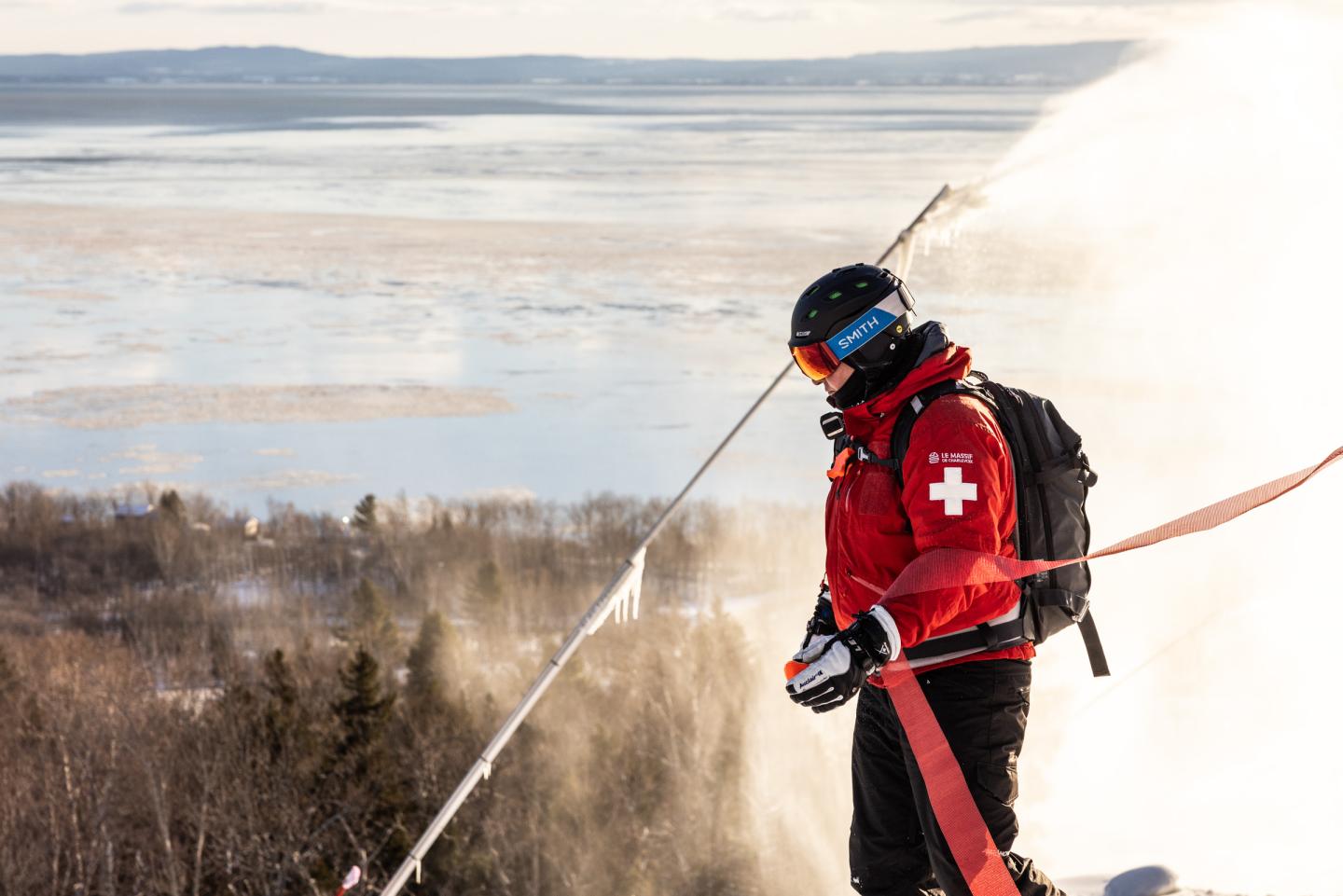Mountain safety and awareness
In case of emergency
8:00 a.m. to 4:00 p.m.: 418-632-5876, ext. 4911
Outside operating hours: 911
Le Massif de Charlevoix offers diverse terrain where conditions can change quickly. Whether you're skiing, snowboarding, alpine touring, or snowshoeing, it's important to stay aware of the risks and follow all posted signs. Stay alert, especially in low visibility or challenging conditions. Take the time to get informed so you can enjoy the mountain safely.
Mountain Code of Conduct
Adopted under the Act respecting safety in sports, this code applies to all individuals engaging in snow sports on the mountain:
- Remain in control of your speed and direction. Make sure you can stop and avoid any person or obstacle.
- Give the right-of-way to those downhill and ahead of you. It's your responsibility to avoid them.
- Stop in a safe place. Only stop where you're clearly visible from above and not obstructing the trail.
- Look uphill and yield when starting downhill or entering a trail. Make sure the way is clear before merging or beginning your descent.
- Stay at the scene and identify yourself to a ski patroller or first-aider, if you're involved in or witness an accident.
- Use and wear proper equipment to prevent runaway gear at all times.
- Never ski or ride when impaired by drugs or alcohol.
- Read and obey all signs and warnings. Stay on open trails and never enter closed areas.
Know the Risks – Ride Smart
There are elements of risk that common sense and personal awareness can help reduce. Regardless of how you use the slopes, always show courtesy to others. You must adhere to the codes listed above and share the responsibility with others for a safe and enjoyable outdoor experience.
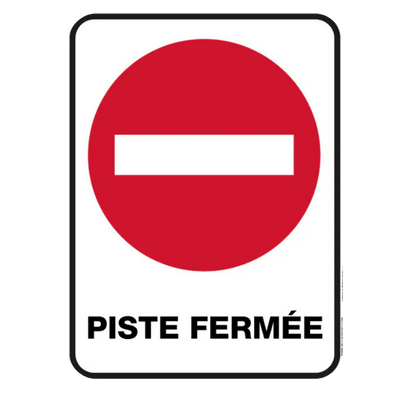
|
Closed trailsAccess to certain trails may be restricted at any time due to safety or operational reasons, such as fallen trees, damaged terrain, on-mountain events, or active machinery. These closures are in place to ensure your safety. Entering a closed trail is a violation of the Mountain Code of Conduct and may result in suspension of your access privileges. |
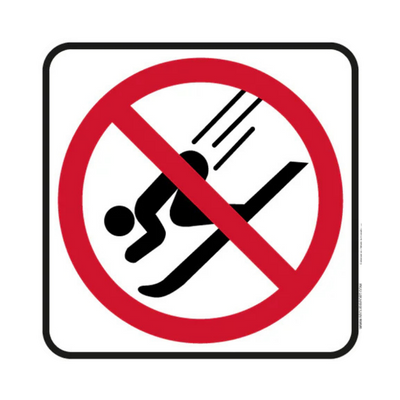
|
High-speed descent prohibitedTo ensure everyone’s safety, high-speed descent is strictly prohibited in this area. Excessive speed increases the risk of accidents and disrupts the safe sharing of the trails. |
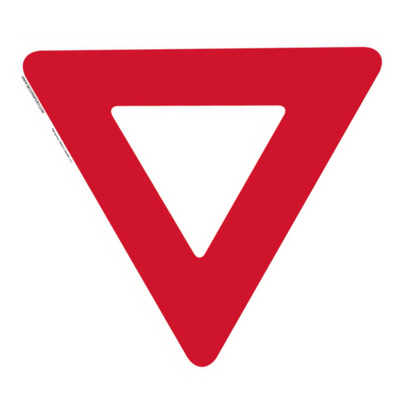
|
YieldThis sign marks the junction of multiple trails. When you see a Yield sign, always look uphill and make sure the trail is clear before entering. Give the right of way to riders and skiers coming downhill. Failing to yield can lead to collisions, and you may be held responsible. |

|
MogulsThis sign indicates that moguls are present on the trail. It is posted at the trail entrance and at access points where moguls may not be immediately visible from above. |
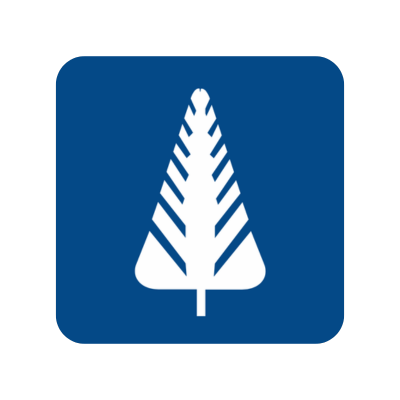
|
GladeThis sign indicates a glade trail ahead. It is posted at the trail entrance and at access points where the glade may not be visible from above. |
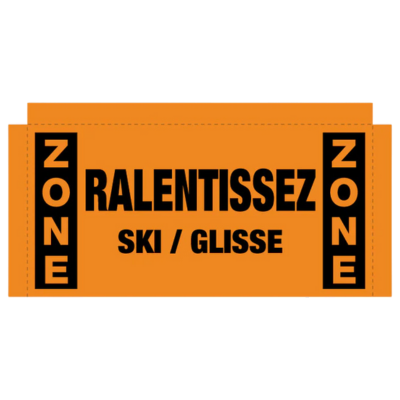
|
Slow down“Slow Down” banners mark the entrance to areas where you must reduce your speed. These zones are often found at trail intersections or places where high speed increases the risk of injury or collision. Failing to slow down in these zones may result in suspension of your lift privileges and revocation of your pass. |
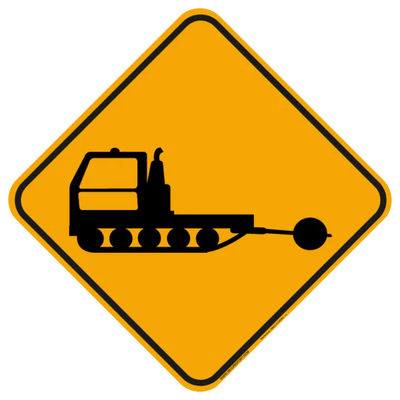
|
Machinery at workThis sign indicates grooming machines are operating ahead. It is posted at the trail entrance and at all access points. It is usually accompanied by a “Closed Trail” sign behind ropes and bamboo poles to secure the area. |
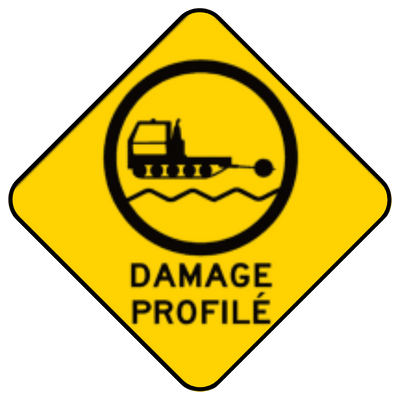
|
Profiled groomingThis sign indicates the trail has been groomed with a specific profile to provide an optimal surface. To maintain this quality, please avoid prolonged stops, sharp turns, and skiing or riding outside the designated track. |
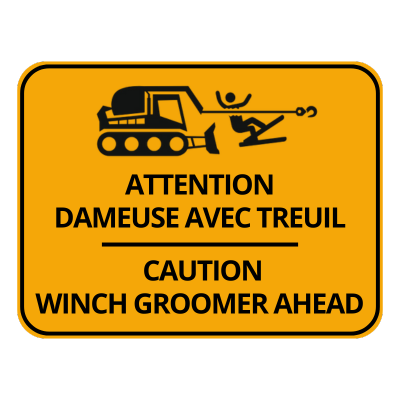
|
Winch groomer in operationThis sign is posted when a grooming machine with a winch is in operation. The cable, often hidden under the snow, can tighten or move suddenly and poses a serious hazard. For your safety, access to the trail is strictly prohibited while this sign is displayed. |
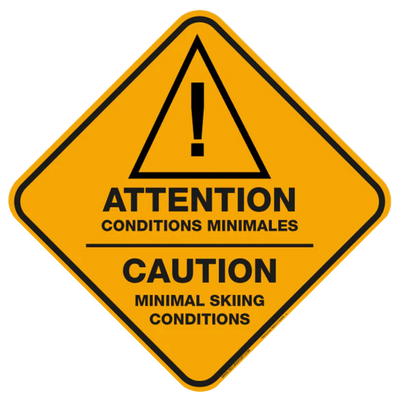
|
Minimum conditionsThis sign indicates limited snow coverage on the trail, which remains passable with caution. You may encounter exposed rocks, small streams, or areas with little to no snow. To avoid equipment damage, please ski carefully and be prepared for unexpected conditions. |
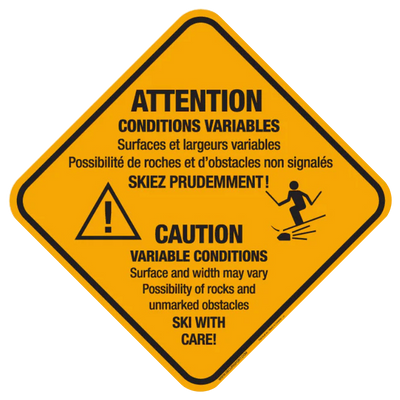
|
Variable conditionsThis sign indicates the trail is narrower than usual with uneven snow surfaces. You may encounter tighter sections and unmarked obstacles such as rocks or other hazards. Please stay alert and ski cautiously. |
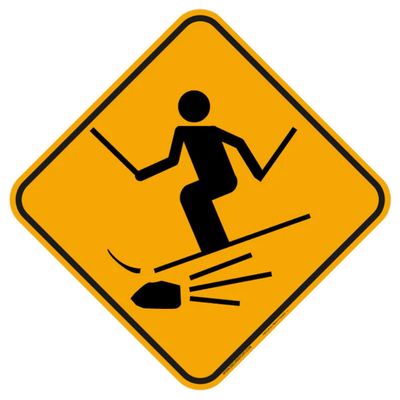
|
Exposed areasThis sign warns of exposed zones and rocks on the trail. Skiers and snowboarders are responsible for staying alert and adjusting their path to avoid these obstacles, helping reduce the risk of injury or equipment damage. |
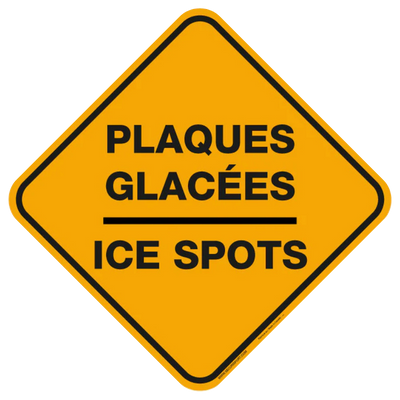
|
Icy spotsThis sign warns of hard-packed snow or icy patches on the trail, sometimes exposed or covered by only a thin layer of snow. Please ski with caution and ensure your equipment is properly sharpened before using this trail. |

|
Experts onlyThis area is reserved for expert-level skiers and riders. Please assess your skills carefully and enter only if you are confident in your ability to handle challenging terrain. |

|
SnowmakingThis sign indicates the presence of snow guns, whether operating or not. Use caution, as these high-pressure machines can be hazardous. Blown snow may alter the terrain and reduce visibility. If a trail is closed for snowmaking, it is important to respect all signage, as personnel and machinery may be working in the area. |
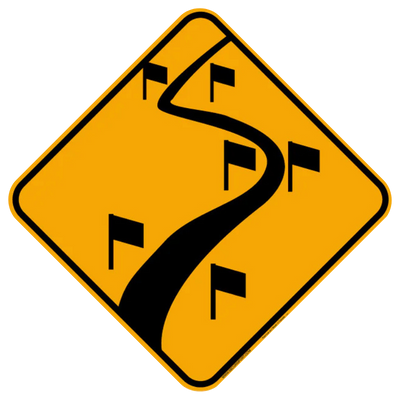
|
Training in progressThis sign indicates that training activities are underway and may involve specific equipment. The trail may be partially or temporarily closed. If the trail remains open, please stay alert, respect marked zones, and watch for both equipment and athletes on the trail. |
General safety
Trail difficulty levels
On a first visit, all skiers and snowboarders—regardless of experience—are encouraged to start with the easiest trails to properly assess the resort’s unique trail ratings before progressing to more challenging terrain.
It’s important to note that trail classifications—🟢 green circle (easy), 🟦 blue square (intermediate), ◆ black diamond (advanced), and ◆◆ double black diamond (expert)—are not standardized across resorts. A blue run at Le Massif may be easier or more difficult than a blue run at another mountain. Trail ratings are relative to the specific terrain, layout, and conditions of each resort.
Signage and barriers
All poles, flags, barriers, protective padding, signs, and other markings on the mountain are there to alert you to obstacles or potentially hazardous areas. However, these measures do not guarantee your safety or prevent injury. According to the Alpine Responsibility Code, it is your responsibility to remain vigilant and avoid all hazards, even those that are marked.
Drone use
Recreational drone use is strictly prohibited at Le Massif de Charlevoix due to safety concerns, privacy risks, and its impact on the guest experience. Any violation of this rule may result in a warning or expulsion from the area. Commercial drone operations are permitted only with prior written authorization from Le Massif de Charlevoix.
Dogs prohibited in winter
Dogs are not permitted on the mountain during the ski season—this includes all slopes and indoor areas. This rule is in place to ensure the safety of all skiers and riders. Please note: This restriction also applies to alpine touring.
Equipment and preparation
Helmet use
At Le Massif, wearing a helmet is mandatory in snow parks and on the sledding trail. Helmet use is also strongly recommended throughout the ski area—whether you're skiing, snowboarding, or enjoying any other sliding activity. We encourage all guests to learn about the benefits and limitations of helmet use. Safety starts with controlled and responsible practice, in accordance with the Alpine Responsibility Code.
Baby carriers
For safety reasons, skiing or snowboarding while carrying a baby or child in a carrier or backpack is strictly prohibited. Alpine touring with a child is permitted, but descent must be made via gondola.
Authorized equipment
- Alpine skis (classic, parabolic, telemark, twin-tips) with safety-release bindings.
- Snowboards with retention system strongly recommended.
- Miniskis / Snowblades with proper ski bindings.
- Snow-Go only.
- Dual-ski and Uniski (for adaptive skiing only).
Prohibited equipment
- Cross-country skis (classic, skating, off-piste with edges, etc.)
- Sleds, toboggans, tubes, sliding mats, crazy carpets, or any kind of similar sliding device.
- Snowblades – bindings with wire (no release system).
- Skibikes.
- Snowscoots (snow scooters).
- Off-piste cross-country skis.
- Powsurf or surfboards.
- Onefoo miniskis.
- Miniskis with soft boots.
- Hok skis (ski raquettes).
- Snowfeet (snow skates).
- Snowskates / snowdecks.
- Sled dogs.
- Stoltski.
- Fatbikes.
Get ready for the mountain
- Wear sunscreen, goggles, and a helmet—even on cloudy days.
- Dress warmly to prevent hypothermia and frostbite.
- Drink regularly to stay hydrated.
Mountain behavior
Speed and precautions to avoid collisions
Along with following the Mountain Code of Conduct, adopting these three habits will help ensure your safety and that of others on the slopes:
- Anticipate
Always be ready to slow down or change direction. Maintain good control over your speed and trajectory at all times—regardless of conditions— whether you’re on groomed slopes or in the trees, to avoid obstacles and other people. - Stay alert
Keep your eyes open and actively monitor your surroundings. Being aware of other skiers and snowboarders, as well as changing snow and visibility conditions, will help you enjoy your day safely. - Adapt your descent
Slow down in areas with limited visibility, such as intersections or sharp turns. Maintain a safe distance when approaching others or merging onto trails. If it’s your first time on a trail, take it slow to spot bumps, dips, or other areas that require caution.
By keeping these three principles in mind during every descent, you contribute to a safer and more enjoyable experience for everyone.
Access prohibited outside opening hours
Even when the lifts are stopped, our teams continue working on the mountain, day and night. Being on the trails outside of opening hours puts your safety at risk and endangers our staff.
Unpredictable conditions
When the mountain is closed, visibility is often reduced, and some areas may be obstructed by terrain features, snow piles, or poor lighting. You might not see a snowmobile or grooming machine approaching—and our teams may not see you in time either.
No emergency services available
In case of a fall or injury, no patrol is on duty to assist. This means you could be exposed to cold for an extended period without help, significantly increasing the risk of hypothermia or complications.
Risks from operating equipment
During closing hours, heavy machinery such as groomers and snowmobiles are active on the trails. Their presence on unexpected routes, combined with low visibility, creates a high risk of collision. Operators do not expect to encounter people on closed trails—a collision could have serious consequences.
Danger from winch-equipped groomers
Some groomers are equipped with winches and steel cables that can extend over a kilometer. Buried under the snow and often invisible, these cables can tighten or release suddenly during maneuvers, posing extreme danger to anyone nearby. A cable snap or sudden movement can cause severe or even fatal injuries.
Off-piste areas • safety notice
- Only travel in designated areas.
- Respect signage, wildlife, the environment, and the Mountain Code of Conduct.
- Never descend on uphill trails.
- Use only open trails or designated off-piste zones.
- Leave the trails before resort closing time.
- Be in good physical condition, properly equipped, and carry a fully charged phone.
- Never tour alone; minors must be accompanied.
- Check current conditions before heading out or hire a guide if needed.
- A minimum fee of $250 may apply for any intervention outside authorized zones or hours.
Ski lifts
General rules
- If it’s your first time using a lift, take a moment to watch how it works or ask a staff member for help.
- Be courteous to other users.
- Slow down as you approach the loading area.
- Keep your RFID card with you—preferably in the left jacket pocket—for quick scanning.
- Only board and exit lifts at designated spots.
- Follow all posted signs and staff instructions.
- To ensure smooth loading, gather as a group before reaching the platform.
- Remove all headphones before entering loading or unloading zones.
- After leaving the seat, clear the unloading area promptly.
- Dress warmly for the gondola ride in the evening.
- Alcohol is not permitted in the lift.
Children and supervision
- If you're with a young child, assist them getting on and off the lift. Never leave them unattended—you are responsible for their safety.
- Ensure the child is seated properly and securely at the back of the seat.
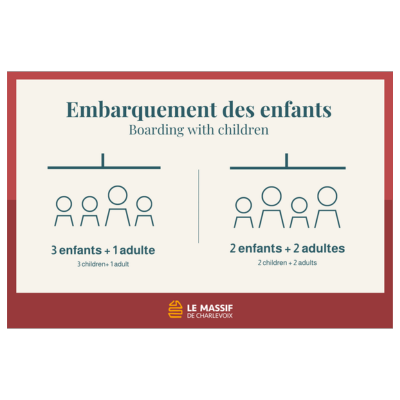
|
Boarding with childrenTo keep young skiers safe, make sure children are seated between adults when boarding. This allows for constant supervision and ensures the safety bar can be handled securely. |

|
Minimum height requirement: 135 cm tall to ride the chairlift aloneChildren under 135 cm may have difficulty operating the safety bar by themselves. To ensure their safety, they must be accompanied by an adult when boarding. This helps provide proper supervision and safe use of the lift. |
Safety and behavior
- Before boarding a chairlift, remove your backpack or any bag worn on your shoulders.
- During loading and unloading, lift your poles and remove the straps.
- If you fall while unloading, keep your head down and move quickly out of the way.
- Do not swing, jump, or behave recklessly on the lift. If riding alone, sit in the center of the seat.
- Always lower the safety bar as soon as you're seated.
- Before unloading, check that your clothing or accessories are not caught.
- In the event of a temporary stop or rollback, never attempt to jump off.
In case of an accident
What to do in case of a mountain accident
If you are involved in a collision or incident on the slopes, both the law and the Mountain Code of Conduct require you to stop, provide assistance, and give your name and contact information. It is also essential to report the accident to the ski patrol.
How to Report an Accident
In an emergency situation on the mountain, contact the ski patrol by calling the emergency number listed on the trail map: 418-632-5876, extension 4911. We recommend saving this number in your phone before you head out.
If you are unable to call yourself, ask another skier or snowboarder to go to the nearest lift station and alert an attendant, who can then contact the ski patrol.
When communicating with the ski patrol, try to provide:
- The exact location of the incident (e.g., trail name, lift tower number, GPS coordinates if available).
- A description of the accident and any present hazards.
- The number of injured persons and, if possible, the nature of the injuries (e.g., loss of consciousness, head or spinal injuries).
On-Site Priorities
Once the alert has been given, follow these steps:
- Ensure the safety of everyone – yourself, the scene, then the injured person.
- Stabilize the head and neck if necessary.
- Check for breathing.
- Control any bleeding.
General terms and conditions
Please review the rules governing access and the services offered.
View the General Terms and Conditions
Acknowledgment and Acceptance of Risks
Learn about the risks associated with mountain activities and your responsibilities.
Read the Risk InformAtion
